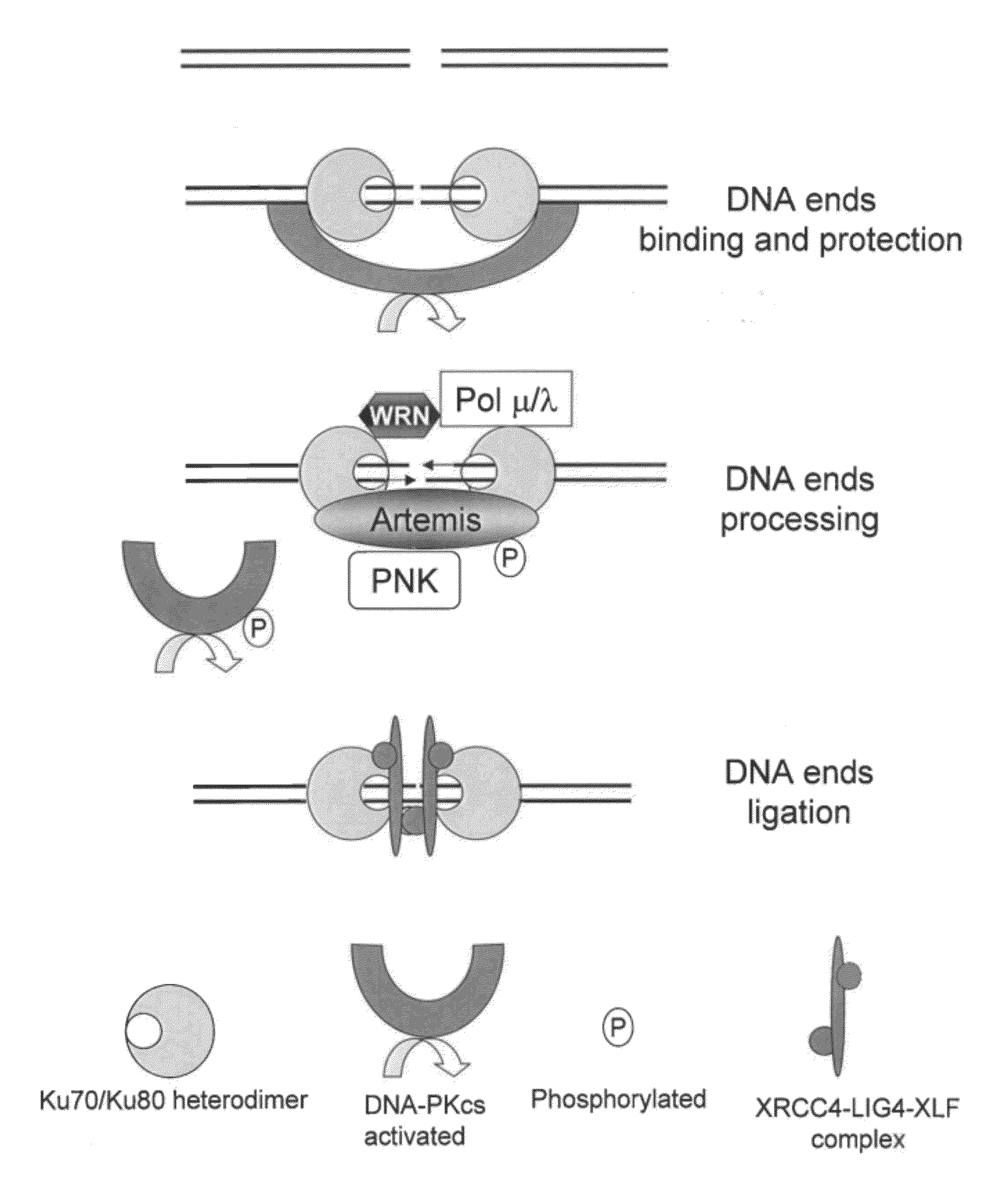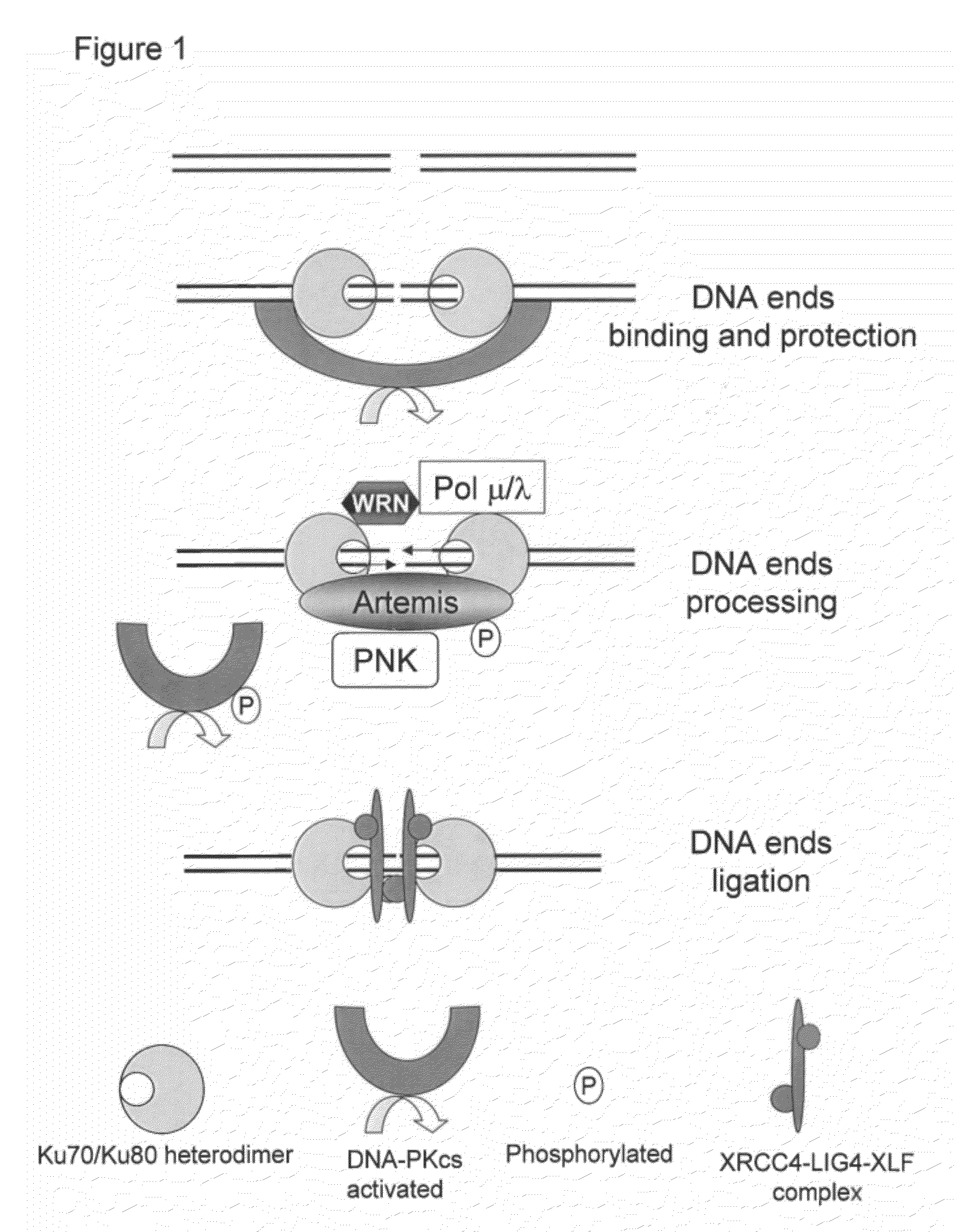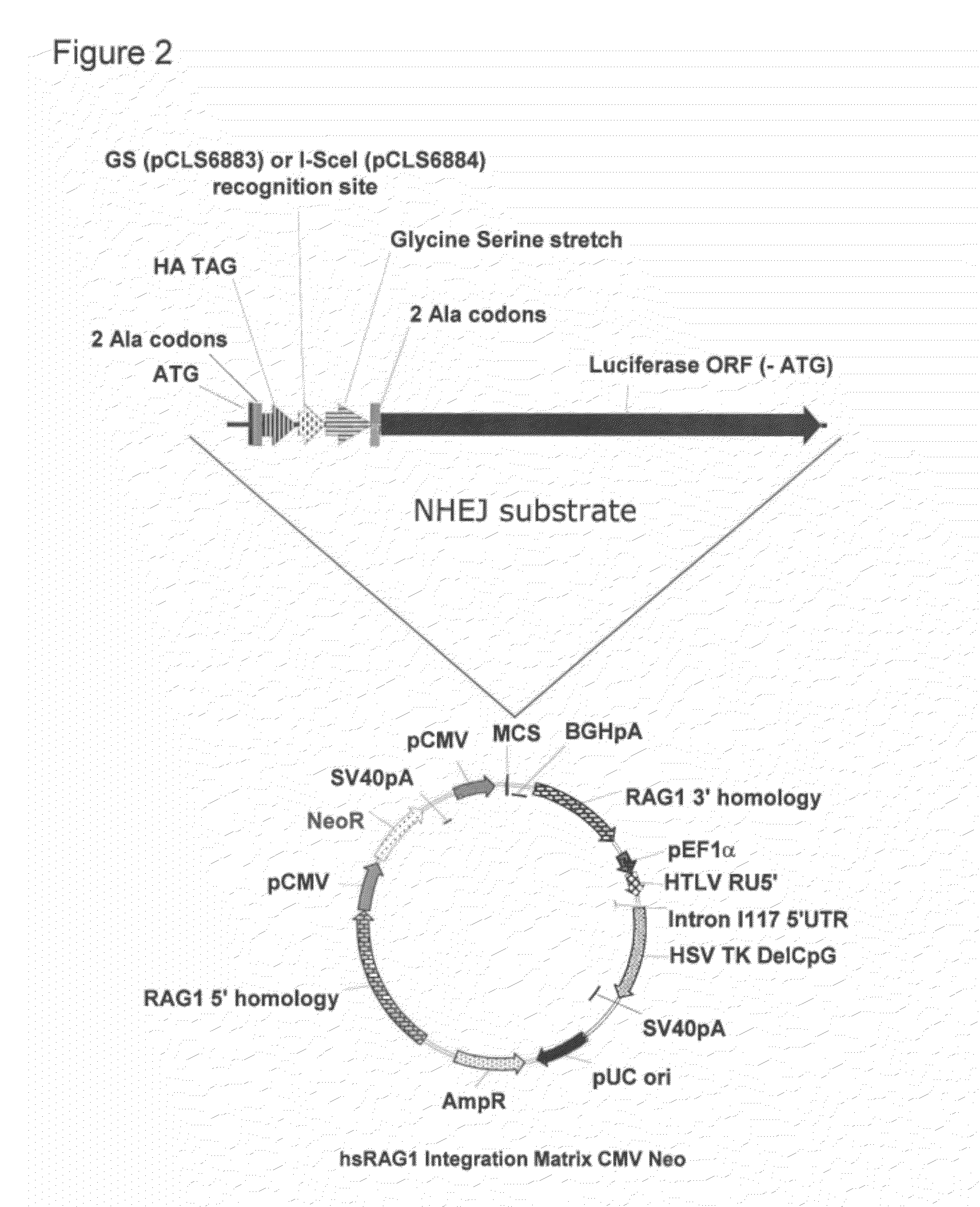Method for modulating the efficiency of double-strand break-induced mutagenesis
a double-strand break and efficiency technology, applied in the field of modulating the efficiency of double-strand break-induced mutagenesis, can solve the problems of dna damage leading to mutagenesis not being able to target precise genomic dna sequences, unable to achieve dsbs repair by nhej, and the overall yield of induced mutations is quite low, so as to increase or decrease the effect of dsb-induced mutagenesis
- Summary
- Abstract
- Description
- Claims
- Application Information
AI Technical Summary
Problems solved by technology
Method used
Image
Examples
example 1
Constructions Monitoring Meganuclease-Induced Mutagenesis
[0254]Plasmids measuring meganuclease-induced mutagenesis at their target site were constructed. They are based on activation of a reporter gene after cleavage of a target by a meganuclease followed by a mutagenic repair of this double strand break (DSB). The present invention uses Luciferase reporter gene and I-SceI and GS meganucleases but other reporter gene such as GFP and other meganucleases can be used.
[0255]a) Materials and Methods
Cell Culture
[0256]Cell line 293H was cultured at 37° C. with 5% CO2 in Dulbecco's modified Eagle's medium (DMEM) Glutamax supplemented with 10% fetal calf serum, 2 mM L-glutamme, 100 UI / ml penicilline, 100 μg / ml streptomycine, 0.25 μg / m amphotericine B (Fongizone).
Transient Transfection in 96 Well Plate Format
[0257]Twenty thousand cells per well were seeded in white 96 well plates one day before transfection. Per well, cells were transfected with 200 ng of total DNA with 100 ng pCLS6883 (SEQID...
example 2
Screening with Extrachromosomal Assay of siRNAs Targeting Genes Coding for Kinases
[0263]The construct measuring SC_GS induced mutagenesis at GS locus with Luciferase reporter gene (pCLS6883, SEQID NO: 1) was used to screen in an extrachromosomal assay siRNAs targeting genes coding for kinases. This screen identified 23 siRNAs that led to stimulation of Luciferase signal induced by meganuclease SC_GS.
[0264]a) Materials and Methods
Extrachromosomal Screening
[0265]Twenty thousand of 293H cells per well were seeded in white 96 well plates one day before transfection. Per well, cells were transfected with 200 ng of total DNA with 100 ng pCLS6883 (SEQID NO: 1) and either 100 ng of pCLS2690 (SEQID NO: 3) or 100 ng of pCLS0099 (SEQID NO: 12) and with siRNA at 33 nM final concentration using 1.35 μl of Polyfect transfection reagent (QIAGEN). The siRNAs kinase set (QIAGEN) is targeting 696 genes with 2 siRNAs per gene. Ninety-six hours post transfection 50 μl per well of ONEGlo (Promega) were ...
example 3
Establishment of Cellular Model Measuring Meganuclease-Induced Mutagenesis
[0270]Stable cell lines measuring meganuclease-induced mutagenesis at targeted locus were established. The different constructions were introduced at RAG1 locus in a single copy using cGPS kit. The cell line measuring SC_GS-induced mutagenesis can be used to screen an siRNA collection covering 19,121 genes to identify new genes regulating mutagenic DSB repair.
[0271]a) Materials and Methods
Cell Culture
[0272]Cell line 293H was cultured at 37° C. with 5% CO2 in Dulbecco's modified Eagle's medium (DMEM) Glutamax supplemented with 10% fetal calf serum, 2 mM L-glutamine, 100 UI / ml penicilline, 100 μg / ml streptomycine, 0.25 μg / ml amphotericine B (Fongizone). The clones measuring meganuclease-induced mutagenesis were maintained with 200 μg / ml of G418 (Invitrogen).
Stable Transfection to Generate Cell Line Measuring I-Meganuclease-Induced Mutagenic NHEJ Repair
[0273]One million of 293H cells were seeded one day prior to ...
PUM
 Login to View More
Login to View More Abstract
Description
Claims
Application Information
 Login to View More
Login to View More - R&D
- Intellectual Property
- Life Sciences
- Materials
- Tech Scout
- Unparalleled Data Quality
- Higher Quality Content
- 60% Fewer Hallucinations
Browse by: Latest US Patents, China's latest patents, Technical Efficacy Thesaurus, Application Domain, Technology Topic, Popular Technical Reports.
© 2025 PatSnap. All rights reserved.Legal|Privacy policy|Modern Slavery Act Transparency Statement|Sitemap|About US| Contact US: help@patsnap.com



